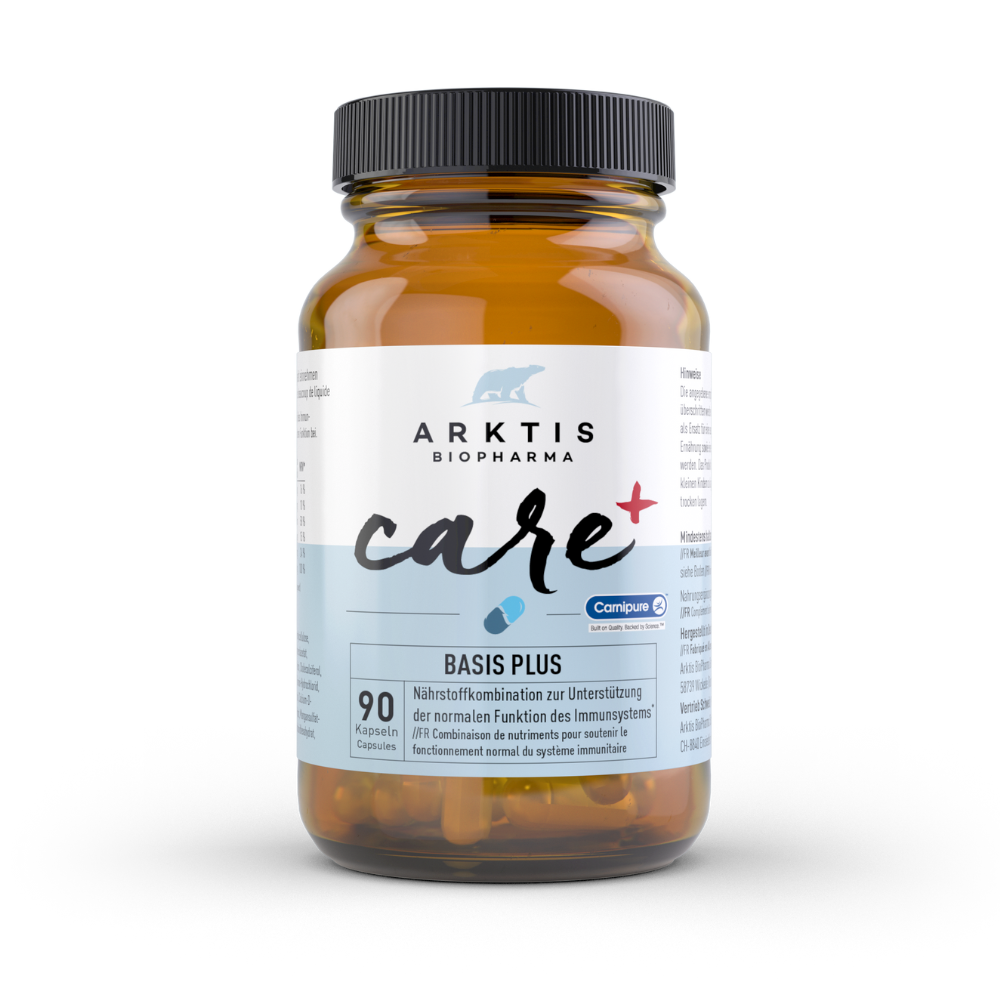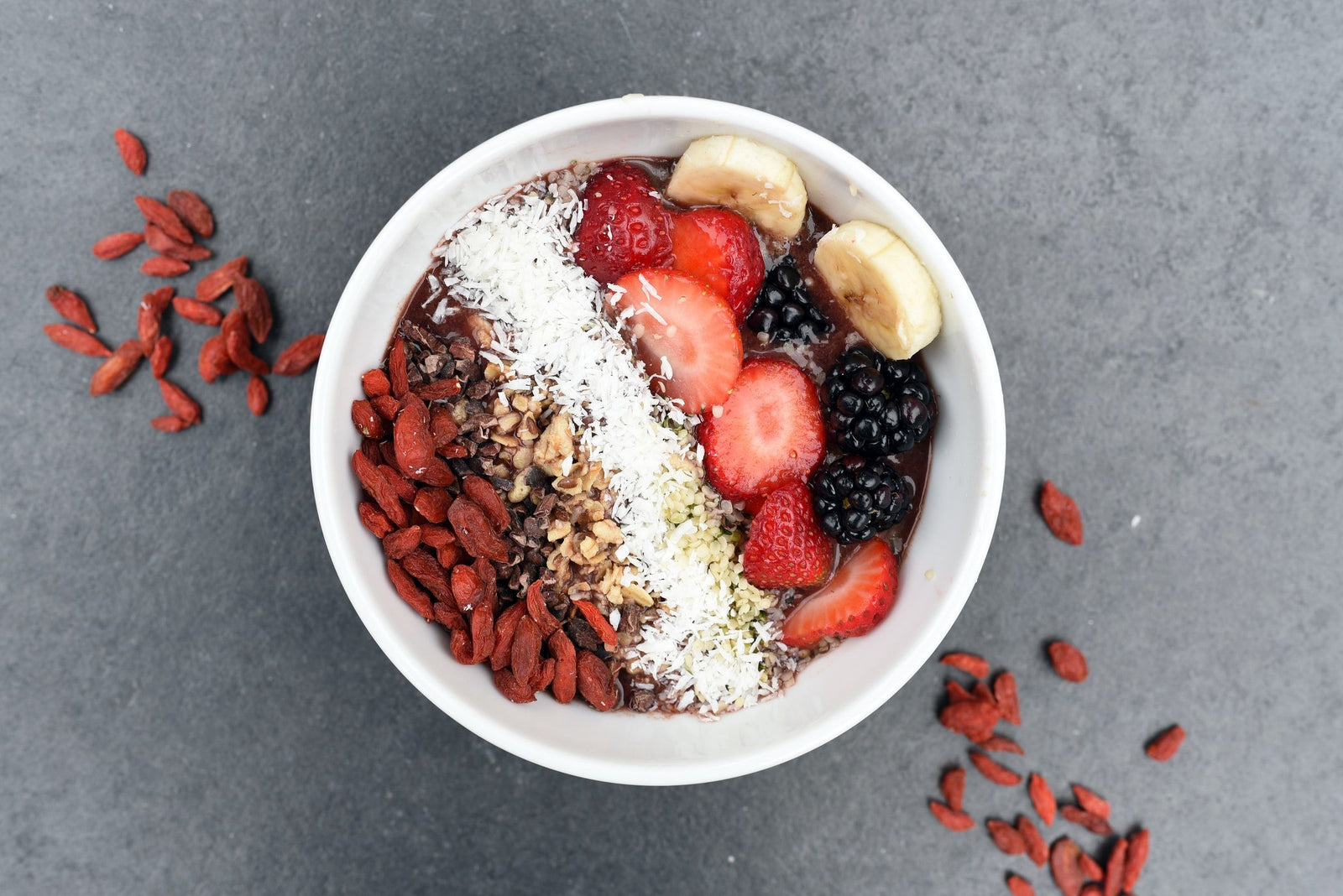If you believe the media, goji berries are not just on everyone's lips. The Chinese powerhouses are said to have amazing properties. But can goji berries really do as much as they promise?
What are goji berries?
Also known as the Chinese wolfberry or buckthorn fruit (lycium barbarum or lycium chinense), the fruit belongs to the nightshade family, like tomatoes, potatoes and eggplants.
It is mainly grown in China in the province of Ningxia, which offers optimal growing conditions due to its location on the Huang He River, and in Mongolia. However, the shrub, which grows up to 2 meters high and produces bright red-orange berries, can also be found in some areas of Tibet, at the foot of the Himalayas.
The hype surrounding the goji berry
Goji berries as the solution to all health problems? It certainly can't do that, but the small berry is packed full of micronutrients and special sugar molecules(polysaccharides). These are not sugars in the conventional sense, but plant substances that can have positive effects on the human body.
In connection with polysaccharides, there is talk of the possible increased formation of antioxidant enzymes. They can strengthen the immune system and also inhibit the growth of diseased cells, e.g. cancer cells.
Our beneficial intestinal bacteria also benefit from the sugar compounds, as they serve as food for them, so the berries have a prebiotic effect.
Miracle berry or just a placebo?

The positive effects of goji berries have been largely confirmed by numerous scientific studies. The many different substances such as vitamin C, vitamin B1, vitamin B2, vitamin E, carotenoids (zeaxanthin, β-cryptoxanthin, mutatoxanthin, β-carotene), betaine, cerebrosides, β-sitosterol, flavonoids, amino acids, minerals and iron are responsible. The iron content is high and, in combination with the vitamin C also present in the berry, can be utilized well and efficiently.
The total antioxidant content is enormous. This value is usually measured in ORAC (Oxygen Radical Absorption Capacity), the ability to neutralize oxygen radicals. ORAC values of between 20,000 and 30,000 per 100g are given for goji berries.
In comparison with other types of fruit or vegetables, the vitamin bundle from China is clearly ahead: pears have an ORAC value of just 110, apples reach 207 and cherries 670, while vegetables have higher ORAC values: beet, for example, 850, spinach 1200 and cherries 670.For example, beetroot has 850, spinach 1200 and cabbage 1700.
Only certain dried herbs/spices such as oregano, rosemary or thyme (in the region of approx. 150,000) have even higher values. However, as these are usually only used for seasoning, the amount consumed is also considerably lower.
Goji berry effect
Why goji berries are so healthy is shown by their diverse effects:
- Goji berries are a good source of energy for our beneficial intestinal bacteria and thus support the intestinal flora. The intestinal flora plays an important role in digestion, bowel movements, nutrient utilization and intact intestinal mucosa. Healthy intestinal flora thus prevents chronic diseases and leaky gut syndrome. Goji berries are also ideal for nutrition during and after a detoxification cure.
- General protection against oxidative stress and anti-inflammatory effect
- Protection of the retina/macula in the event of oxidative stress or glaucoma (increased intraocular pressure); for example, it contains large amounts of taurine and zeaxanthin, which are important for the eyes
- Protection against cancer, atherosclerosis and neurodegenerative diseases (including dementia, M. Alzheimer's, Parkinson's disease)
- Strengthening of the immune system
- Improved general mood, more energy, better sleep (human study)
- Weak aphrodisiac
- Blood pressure lowering effect
- Anti-diabetic effect
Buying goji berries: What you should look out for
The size of the berries says nothing about their quality. It is important that they are harvested when ripe and are free from pesticides.
There have been and still are major problems in this area. Plants that have been treated with pesticides often have a lower content of so-called secondary plant substances. These are used by plants to defend themselves against pests and fungi, for example. The pesticides relieve the plant of this task, meaning that its own metabolism is no longer forced to produce these substances.
But it is precisely these secondary plant substances that we want. So when buying, make sure you buy organic products from controlled organic and pesticide-free cultivation.
How many goji berries a day are recommended?
Around 6 - 12 grams a day, i.e. around 1 - 2 tablespoons a day, is sufficient to support your nutrient intake. Goji berries go well with breakfast, lunch and dinner. As a topping in muesli or salad, as a baking ingredient and many more.
Preparation test of goji berries
To investigate this question, the online store greenSUPPS carried out an extensive goji preparation test. Various, perhaps somewhat unconventional, preparation methods were tested and evaluated.
During the test, the taste, appearance, consistency and aroma were tested and assessed by 24 people. The individual methods are described below, listed according to the ranking achieved.
 PLACE 1 | CHOCOLATE
PLACE 1 | CHOCOLATE
Taste: super tasty, chocolate flavor with the typical sweet and sour note of goji
Appearance:brown to red/brown, depending on the type of chocolate and quantity
Recommended use:A great party snack on a toothpick
 PLATZ 2 | TEE / LIMONADE
PLATZ 2 | TEE / LIMONADE
Taste:wonderfully refreshing, light berry aroma
Appearance:slightly orange - looks great with berries in it
Recommended use:an excellent thirst quencher on hot summer days
 PLATZ 3 | DIRECTLY FROM THE PAPERBAG
PLATZ 3 | DIRECTLY FROM THE PAPERBAG
Taste:berry-like, full-bodied, sweet and sour, slightly bitter and nutty
Appearance:slightly wrinkled, wrinkled appearance, elongated shape, strong red to orange color
Recommended use: nibble on the sofa or in muesli
PLACE 4 | COOKED
Taste:no bitterness, light sweetness comes out wonderfully
Appearance:shines beautifully orange, very soft and tender
Recommended use: In muesli or pureed for spooning
PLATZ 5 | GEBRATEN
Taste:with a slight note of the coconut oil used, super crunchy and slightly nutty, nice roasted aroma perceptible
Appearance: dark red to dark brown - beautiful autumn colors.
Recommended consumption: snack with a nice book
PLACE 6 | CARAMELIZED
Taste:bitter note dominates, sweet caramel transforms this into an interesting bitter-sweet variant. High crunch factor.
Appearance:dark brown due to the caramel.
Recommended use: alternative to roasted almonds
PLACE 7 | FRYED
The berries turn very dark and black immediately after being immersed in the boiling oil - they are absolutely inedible afterwards. Please do not imitate:-)
Conclusion on the miracle berry goji
The goji berry is a real vital substance bomb, tastes excellent and can make an important contribution to the prevention of numerous diseases.
As the goji berry has a blood-thinning effect, eating it can be problematic if you are taking medication such as Marcumar. However, it may be possible to reduce the dose of this or similar blood thinners. In this case, please seek advice from a doctor who will determine the INR coagulation value. For healthy people without coagulation disorders, this effect is absolutely unproblematic - on the contrary: a slight blood-thinning effect can even protect against a heart attack.
Do you have any questions about goji berries? Or have you already tried them yourself and have a recipe tip or a success story for us? Then we look forward to your comment!

















